
More iPhone Astrophotography
Wednesday evening, 8 September, it was mostly clear. The image above from my Live Webcam shows the clear skies to the west and even Venus (upper left). There were a few clouds around and it was very breezy, but I opened the observatory at 1930 MST, 81°F. I took a quick look at Venus in the 8” telescope. I then began experimenting with mounting my iPhone 3GS on a night-vision scope. My homemade adapter fits but as the nightscope eyepiece rotates for focusing, keeping the focus when attaching the iPhone will be a challenge. I had planned to try imaging a few objects in the nightscope but at 1952 MST, clouds began coming in rapidly from the southwest. Closed the observatory at 2015 MST, 76°F, due to the clouds.
Friday, 10 September, it was clear again, and I opened the observatory at 1815 MST, 90°F. I again attached the iPhone to the nightscope and took this photo showing how it is mounted:
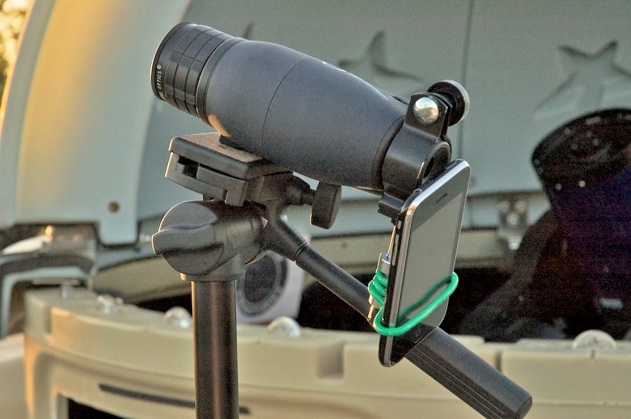
I discovered one problem; when the nightscope is tilted upwards, the iPhone camera moves away from the eyepiece. I fixed that problem by using a rubber-band to hold the phone against the adapter.
At 1835 MST, viewed Venus and then the moon, both low in the west, with the 26mm eyepiece on the 8”. I then set up for iPhone afocal imaging with the 8”. Here is a single frame from a video taken through a 9mm + Light Pollution FIlter (LPR) + Moon Filter + 3X TeleXtender (666X):
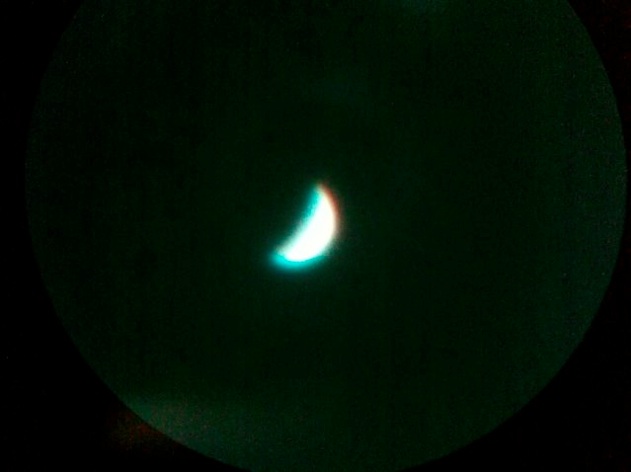
Two filters were used to reduce the glare from bright Venus. However, that resulted in the extra flare around the planet’s image. But you can still clearly see the phase of the planet.
I then went to the moon and slowly panned across its surface while taking iPhone afocal video through the 9mm (222X) eyepiece. Here are three frames from the video:
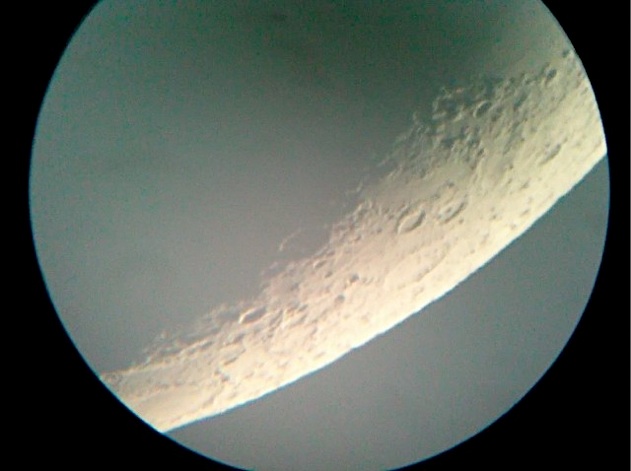
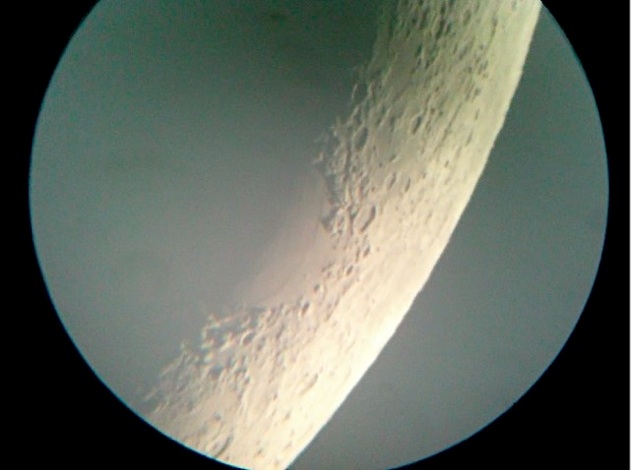
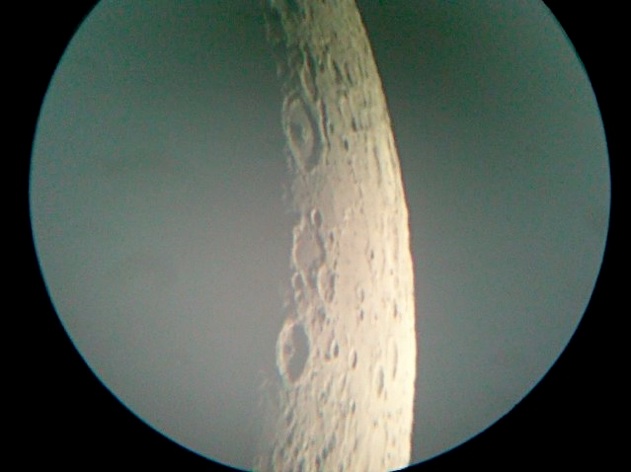
And here are Venus and the moon, taken with the iPhone handheld, with some digital zoom:

Beginning at 1935 MST, I tried to locate Comet 103P/Hartley 2. At 2000 MST, using the 9.7mm eyepiece (206X), I finally located a non-stellar object at the comet’s RA/Dec. With the 5.5mm (364) eyepiece, I was able to confirm its “fuzzy” appearance. The comet is still very faint but will begin brightening over the next few weeks.
At 2100 MST, I attached the iPhone to the 2X nightscope and tried to image M31. Unfortunately, it was too faint, even in my nightscope, for imaging. However, I could see stars on the iPhone screen, so I decided to image the constellation Sagittarius. Here is a stack of 161 frames (done with Keith’s Imager Stacker) and edited to bring out the stars of the handle and top of the familiar “teapot”:

At 2120 MST, viewed Jupiter in the 15mm (133X) eyepiece. The four Galilean Moons were visible, as seen in the screen shot from SkyVoyager on the iPhone:
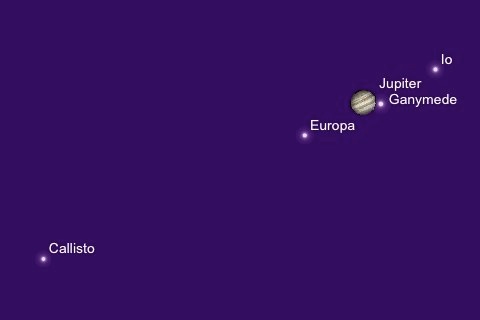
Using the 9.7mm (206X) eyepiece + moon filter, could see good details on the clouds bands. With the 5.5mm (364X) eyepiece, the disk of Ganymede was clearly seen. With the 9.7mm + 2X Barlow Lens (412X) and 9.7mm + 3X TeleXtender (619X), during moments of good seeing the views were very nice and the disk of Ganymede was distinct.
I then set up for iPhone afocal imaging of Jupiter. This is a stack of 310 frames (20 seconds of video) taken with the 9mm + moon filter + 3X TeleXtender:
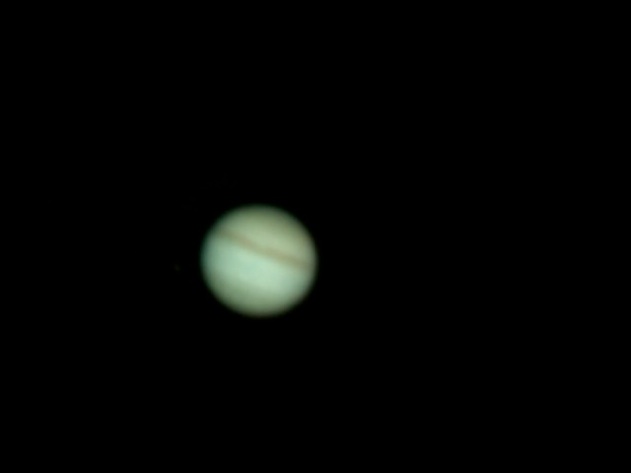
At 2204 MST, the Great Red Spot was coming into view with the 5.5mm eyepiece. At 2245 MST, the GRS was nicely in view. Set up for iPhone afocal imaging. This is a stack of 307 frames (20 seconds of video) taken with the 9mm + moon filter + 3X TeleXtender:
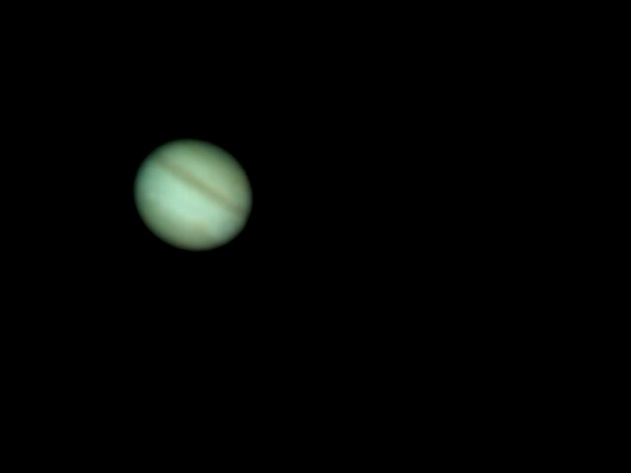
Now that I know this technique works, I will capture even longer videos with the iPhone to have more frames to stack. That should enhance the image quality.
At 2304 MST, seeing was getting worse. Jupiter was now best in the 9.7mm + moon filter.
I set up for nightscope iPhone imaging again. This time I imaged M45, the Pleiades. This is a stack of 162 frames, edited, upscaled 200%, and cropped:
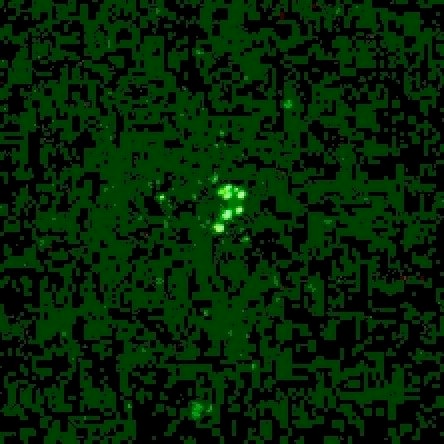
Friday had been a long day of chores and I was getting tired. Closed the observatory at 2350 MST, 68°F. But looking forward to doing more iPhone astrophotography.
And speaking of iPhone astrophotography, checkout the homemade afocal adapter by Raymond Gilcrist. He has made several improvements over my simple adapter. Well done Ray!
Saturday, September 11, 2010

